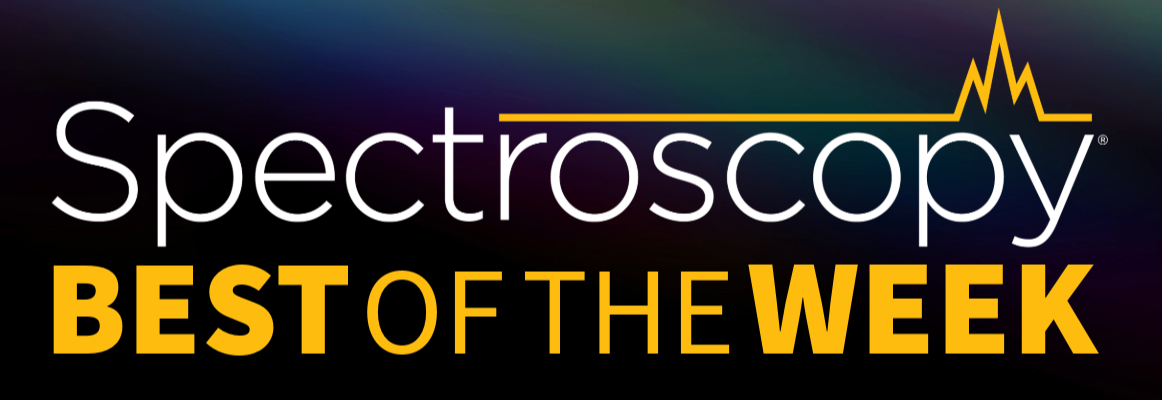Best of the Week: Raman Spectroscopy, Analytica 2024 Awards
This week, Spectroscopy published a variety of articles on the hottest topics in analytical science. Below, we’ve highlighted some of the most popular articles, according to our readers. Happy reading!

An Inside Look at the 2024 Analytica Awards Program
Aaron Acevedo
For over 50 years, Analytica has been a trade fair for laboratory technology, analysis, and biotechnology, where such topics can be discussed on an international scale. During Analytica 2024, which will be held in Munich, Germany from April 9–12, 2024, there will be two award presentations. Both events will be presented by the GDCh Division of Analytical Chemistry, a division of the German Chemical Society, which was founded in 1867. In this article, we go over the two awards that will be presented, the criteria through which nominees are judged, and the organizations that sponsor the awards.
Liquid Instruments FPGA Technology Now Compatible with Apple Vision Pro
Will Wetzel
Last month, Liquid Instruments, a company that specializes in reconfigurable test instrumentation, announced that its Moku platform is now compatible with Apple Vision Pro headsets. With this technology, Moku, which uses field-programmable gate arrays (FPGAs) to deliver and entire suite of instruments and adapt to new technologies, can now be used to interact with multiple instruments without the need for monitors, with hand and eye gestures now being the only tools necessary. This integration was created to, as the company says, accelerate testing in optics, quantum, and photonics research laboratories.
The Latest Applications in Raman Spectroscopy
Will Wetzel
Raman spectroscopy is known for being a versatile method of forensic analysis; this can be attributed to its ability to enable qualitative and quantitative analysis by measuring the frequency and intensity of scattered radiations, respectively. This spectroscopic approach remains popular among analytical scientists since it can provide detailed information on the vibrational and rotational modes of molecules. Ongoing advancements in Raman techniques and instrumentation can further enhance its significance in tissue discovery and characterization. In this article, we discuss the many uses Raman spectroscopy has, and how it can be developed further.
Rigaku Receives Third Year of Funding from TSA
Aaron Acevedo
On April 1, Rigaku Analytical Devices announced that it was awarded a third year of funding for an optional three-year research and development contract from the Transportation Security Administration (TSA). This contract, which is part of the TSA’s Alarm Resolution Program (ARP), aims to provide near-term improvements of security operations and capabilities for resolving explosive and non-explosive prohibited item alarms at airport checkpoints. Here, we discuss the technology the TSA uses to screen for potentially dangerous materials, and how this agreement furthers efforts to maintain travelers’ safety.
Fourier Transform Near Infrared Spectroscopy Analyzing the Composition of Cookies
Will Wetzel
Fourier transform near-infrared spectroscopy (FT-NIR) is useful for analyzing food samples quickly and accurately, all without destroying the sample in the process. The technique is often used to check chemical and physical parameters to ensure flour is appropriate for baking, in addition to checking the moisture and protein content of flours and cereals. In this study led by Cristina Quintelas and Antonio L. Amaral from the University of Minho, FT-NIR was used to predict nutritional parameters in cookies to ensure their safety and quality for consumers.
AI-Powered SERS Spectroscopy Breakthrough Boosts Safety of Medicinal Food Products
April 16th 2025A new deep learning-enhanced spectroscopic platform—SERSome—developed by researchers in China and Finland, identifies medicinal and edible homologs (MEHs) with 98% accuracy. This innovation could revolutionize safety and quality control in the growing MEH market.
New Raman Spectroscopy Method Enhances Real-Time Monitoring Across Fermentation Processes
April 15th 2025Researchers at Delft University of Technology have developed a novel method using single compound spectra to enhance the transferability and accuracy of Raman spectroscopy models for real-time fermentation monitoring.
Karl Norris: A Pioneer in Optical Measurements and Near-Infrared Spectroscopy, Part I
April 15th 2025In this "Icons of Spectroscopy" column, executive editor Jerome Workman Jr. details how Karl H. Norris has impacted the analysis of food, agricultural products, and pharmaceuticals over six decades. His pioneering work in optical analysis methods including his development and refinement of near-infrared (NIR) spectroscopy has transformed analysis technology. This Part I article of a two-part series introduces Norris’ contributions to NIR.